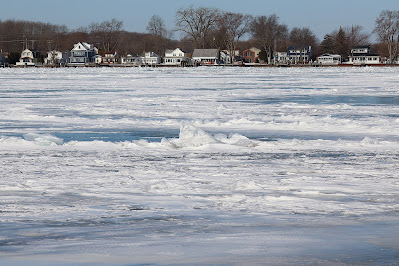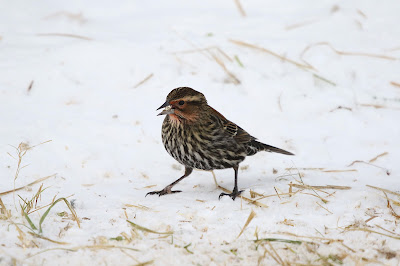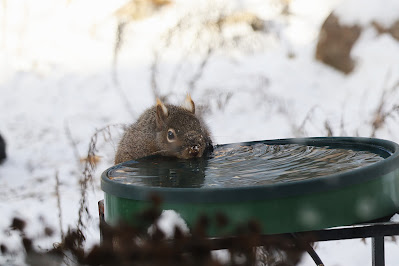Downriver Birds!
For a change of pace, we headed downriver to see what we could find on January 30th. We made a quick stop at the Suncor Trail before heading south, in hopes of finding a Wood Duck. With his bright plumage, he was easy to pick out of the group of Mallards. He was surprisingly aggressive towards many of the Mallard Drakes. He appeared to be protecting his "girl friend" who happened to be a Mallard Hen!
Swans were on our list of hopefuls today. We saw a few Tundra Swans and many Mute Swans but the Trumpeter Swans recently reported in the area eluded us.
Tundra Swans and Canada Geese: Tundra Swans are the smallest of our Swans.
A pair of American Tree Sparrows greeted us at the parking area for the McKeough Dam Outflow. The W. Darcy McKeough Floodway is the largest flood diversion project in Ontario. When the control gates are closed, the threat of flooding in the Town of Wallaceburg is reduced by diverting water from the Sydenham River directly to the St. Clair River.
https://www.scrca.on.ca/flood-and-erosion/w-darcy-mckeough-floodway/
An open space near the McKeough Outlet saw a number of birds congregating. Lots of Common Mergansers were paddling to stay in place so they didn't get swept downriver. One male and several female/immatures were in the group.
We counted approximately 390 Canvasbacks. 60 Redheads, 1 Ruddy Duck, 1 Ring-necked Duck, 4 Bufflehead and 7 Longtails and 23 Common Goldeneye were also present and could be viewed with binoculars.
A Northern Flicker flew across the road while we were stopped.
Another species that we hoped for were Sandhill Cranes. They had been reported a few days earlier and we counted 46 in a field of corn stubble. They are about the same size as a Great Blue Heron but are considerably bulkier.
https://www.allaboutbirds.org/guide/Sandhill_Crane/overview

























































